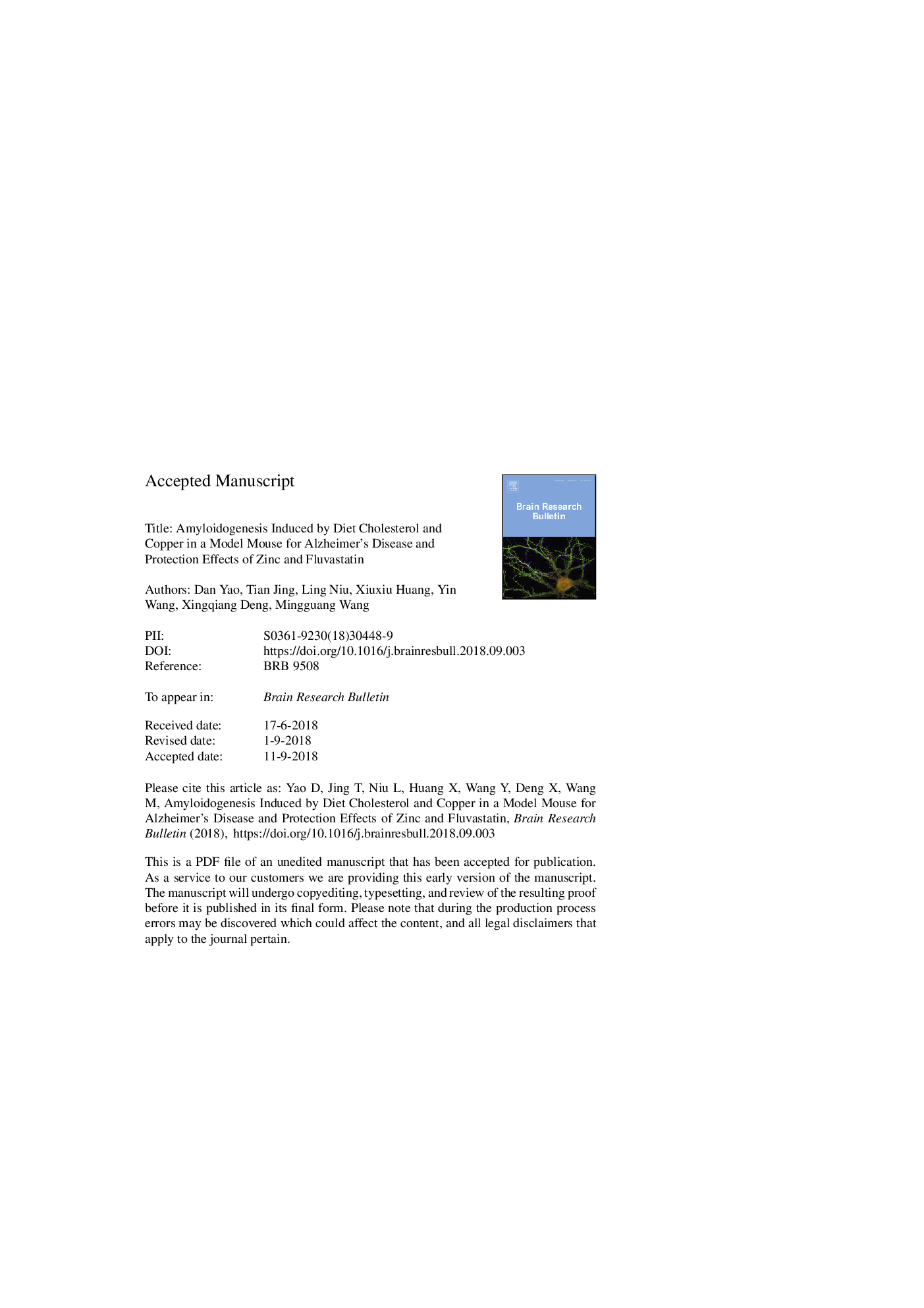| Article ID | Journal | Published Year | Pages | File Type |
|---|---|---|---|---|
| 11017878 | Brain Research Bulletin | 2018 | 23 Pages |
Abstract
Alzheimer's disease (AD) is one of the severe chronic diseases characterized with amyloid beta (Aβ) aggregation and formation of senile-plaque (SP) like structures. Numerous risk factors including trace metals and cholesterol in diet have been identified as potential players for the onset of Aβ aggregation. To further illustrate the effects of copper and cholesterol in AD pathology, we employed an AD model mouse strain (Tg2567) and examined the histological and biochemical changes in the mouse brains and blood. When supplied with 0.1âmg/L copper in drinking water and 2% cholesterol in the food, the mice showed significant deposit of amyloid beta (Aβ) and SP plaque formation in hippocampus and temporal cortex regions in their brains. These mice also showed elevated superoxide dismutase (SOD) activity and increased ceruloplasmin (CP) concentration, and reduced glutathione peroxidase (Gpx) activity in the blood. The physiological function tests indicated these mice were significantly impeded on learning and memory. We further examined the counteracting effects of 0.1âmg/L zinc and 1.0âmg/L fluvastatin (Cholesterol-lowering drug). The combination of zinc and fluvastatin effectively reversed the copper/cholesterol caused memory loss, anatomic amyloid deposits and the biochemical changes in the blood. This work provides more evidence of high-level cholesterol and copper as risk factors to trigger amyloid aggregation and mental dementia; zinc and reduction of food cholesterol levels can protect the animals from amyloid accumulation and learning impairment. The beneficial outcomes of zinc and fluvastatin could hint some potential usages in preventive measures for high-risk AD individuals, but further rigorous test are needed.
Related Topics
Life Sciences
Neuroscience
Cellular and Molecular Neuroscience
Authors
Dan Yao, Tian Jing, Ling Niu, Xiuxiu Huang, Yin Wang, Xingqiang Deng, Mingguang Wang,
